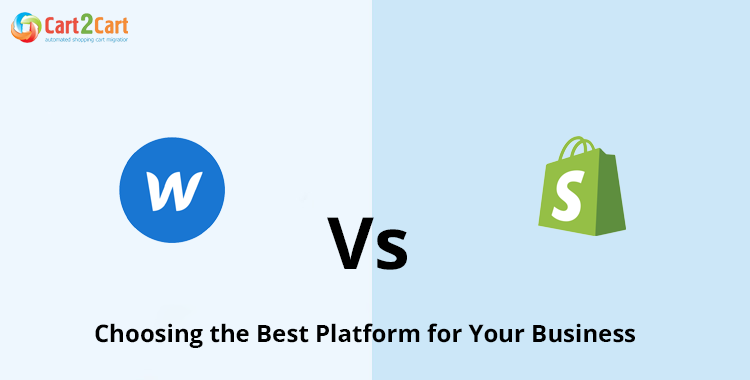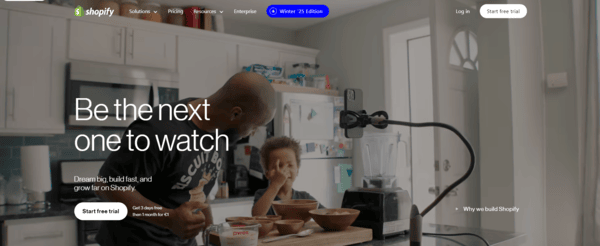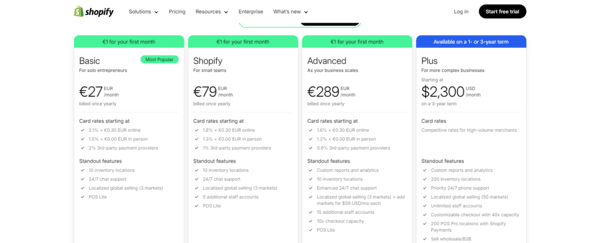
In today’s digital age, selecting the right platform for building your website or online store is crucial. Among the many options available, Webflow and Shopify stand out for their unique strengths and capabilities. Although Webflow offers a more design-focused approach, Shopify is widely recognized for its robust e-commerce features. Whether you’re a designer aiming for creative freedom or an entrepreneur focused on launching an e-commerce store, understanding these platforms’ differences can help you make the best choice.
This comprehensive guide will explore Webflow vs Shopify, examining their features, benefits, challenges, and use cases to help you determine which one aligns with your goals. For those looking to dive deeper into the platforms, a tutorial on each can provide additional insight into how they function and what they offer for users.


Webflow’s pricing is more flexible, catering to users who need a website without e-commerce features. Shopify’s pricing is designed for businesses focused on selling products online.

Overview of Webflow and Shopify
When it comes to building a website or an online store, Webflow and Shopify are two powerful platforms that cater to different types of users. Webflow is designed for those who value creative control and customization, offering an advanced web design tool that allows users to craft visually stunning and highly personalized websites. It is ideal for designers, agencies, or businesses looking to create unique digital experiences, whether for portfolios, blogs, or smaller e-commerce sites. Shopify, on the other hand, is a comprehensive e-commerce platform focused on helping users launch and scale their online stores. It provides a range of built-in tools for product management, payment processing, and shipping, making it the go-to solution for entrepreneurs and businesses that want to focus on growing their online sales with minimal technical complexity. While Webflow offers greater flexibility in design, Shopify excels in its robust e-commerce functionalities and ease of use, making both platforms highly competitive depending on your business needs.
What is Webflow?
Webflow is a website builder and design platform that combines the flexibility of a visual editor with the power of coding. It allows users to create highly customizable websites without needing to write code, making it a popular choice among designers and developers. Webflow supports various website types, including portfolios, blogs, business sites, and small-scale e-commerce stores.
What is Shopify?
Shopify is a dedicated e-commerce platform designed to help businesses create, manage, and grow online stores. Known for its user-friendly interface and robust suite of e-commerce tools, Shopify powers millions of businesses globally. It offers everything from payment gateways to inventory management, making it a top choice for entrepreneurs looking to sell products online. With a wide range of customizable Shopify themes, it provides entrepreneurs with easy-to-use templates to create unique online stores.
Detailed Feature Comparison
When comparing Webflow vs Shopify, it’s essential to evaluate their features side by side to understand their strengths and limitations.Design Flexibility
- Webflow: Webflow excels in design flexibility, offering a visual drag-and-drop editor that rivals professional design software. Users can customize layouts, animations, and interactions down to the pixel, making it an ideal choice for those with a keen eye for design.
- Shopify: Shopify provides a range of pre-designed templates tailored for online stores. While these templates are professional and responsive, customization is limited compared to Webflow. However, Shopify’s templates are optimized for e-commerce, ensuring functionality.
Ease of Use
- Webflow: Webflow has a steeper learning curve, especially for beginners. However, for users familiar with design tools like Adobe XD or Figma, the interface feels intuitive. Its advanced features, such as CMS and responsive design controls, cater to experienced designers.
- Shopify: Shopify is known for its beginner-friendly interface. Setting up an online store is straightforward, thanks to its guided setup process and integrated tools. Even those with no prior experience can launch a store within hours.
E-Commerce Capabilities
- Webflow: While Webflow supports e-commerce, its features are more suitable for small-scale stores or hybrid websites (e.g., portfolios with a shop section). It lacks advanced tools like multi-channel integration and in-depth analytics that Shopify offers.
- Shopify: Shopify is built for e-commerce. It includes product management, payment gateways, inventory tracking, and shipping tools. Additionally, Shopify supports multi-channel selling, allowing businesses to sell on platforms like Facebook, Instagram, and Amazon.
SEO and Marketing Tools
- Webflow: Webflow provides advanced SEO features, including customizable meta tags, alt text, and URL structures. Its clean codebase and fast loading times contribute to better search engine rankings.
- Shopify: Shopify’s SEO tools are tailored for e-commerce, focusing on product page optimization and structured data. While less flexible than Webflow, Shopify integrates with marketing tools like email campaigns and social media ads.
Pricing Breakdown
Cost is a significant factor when deciding between Webflow vs Shopify. Both platforms offer tiered pricing plans, but their structures cater to different needs.| Plan | Webflow | Shopify |
|---|---|---|
| Basic Plan | Starts at $12/month for basic website hosting | Starts at $29/month for basic e-commerce |
| E-Commerce Plan | Starts at $29/month for small-scale stores | Starts at $79/month for professional use |
| Enterprise Solutions | Custom pricing based on needs | Advanced plans at $299/month |

Pros and Cons
Both platforms have their advantages and drawbacks, making them suitable for specific use cases.Advantages of Webflow
- Unparalleled design control.
- Ideal for creative professionals and agencies.
- Advanced SEO features for content-driven sites.
Disadvantages of Webflow
- Limited e-commerce scalability.
- Steeper learning curve for beginners.
- Higher costs for advanced features.
Advantages of Shopify
- Comprehensive e-commerce tools.
- Integration with multiple sales channels.
- Beginner-friendly setup.
Disadvantages of Shopify
- Restricted design customization.
- Dependence on third-party apps for advanced features.
- Monthly costs can add up with add-ons.
To extend the article to 3000 words, I will elaborate on each section, add in-depth insights about each platform, include examples, and expand on features and use cases. Below is the revised, expanded version.


Use Cases: Who Should Use Webflow vs Shopify?
- Webflow:
- Perfect for designers, developers, and agencies.
- Ideal for building portfolios, blogs, and business websites.
- Suitable for small e-commerce stores where design is a priority.
- Shopify:
- Best for entrepreneurs and businesses focused on e-commerce.
- Suitable for stores with large inventories and multi-channel selling needs.
- Ideal for users seeking an all-in-one solution with minimal setup.
Common Scenarios for Each Platform
When deciding between Webflow vs Shopify, understanding the specific scenarios where each platform excels can make the decision easier. For Webflow, it’s a perfect fit for creative professionals, designers, and agencies who need complete control over the website's design. If your focus is on building a portfolio, personal blog, or a content-driven business site, Webflow’s advanced customization features, such as animations and interactions, will allow you to craft a truly unique experience. However, it’s also a good option for small-scale e-commerce businesses where design is a priority, and the product range is limited. On the other hand, Shopify is ideal for entrepreneurs and businesses looking to scale quickly with an e-commerce-first focus. If your goal is to build an online store with multiple products, manage inventory, and integrate payment gateways, Shopify offers a robust suite of tools tailored for e-commerce success. Shopify’s easy-to-use interface and built-in e-commerce features like shipping and multi-channel selling make it a top choice for those who want an all-in-one solution for running an online store without the need for complex customization.
When to Choose Webflow
- You’re a creative professional who prioritizes design.
- You need a custom website with unique animations and interactions.
- Your site’s primary focus is content, not e-commerce.
When to Choose Shopify
- You’re launching an online store with multiple products.
- You require robust e-commerce features like payment gateways and shipping tools.
- You want a platform that simplifies inventory and order management.
Additional Tips for Choosing Between Webflow and Shopify
If you’re still undecided about Webflow vs Shopify, consider the following:- Evaluate Your Skills: If you’re comfortable with design tools, Webflow might be a better fit. If you’re new to website building, Shopify’s simplicity is more appealing.
- Define Your Goals: Are you focusing on design or e-commerce? Let your goals guide your decision.
- Test the Platforms: Both Webflow and Shopify offer trial periods. Experiment with each to see which one feels right for your project.


